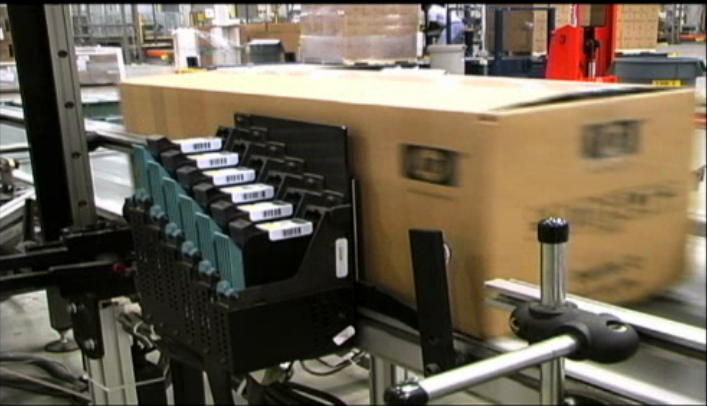Post Date: December 20, 2014
HP USES ITS OWN PRINT TECHNOLOGY FOR CASE CODING
It takes a special kind of printer to meet the demands of a modern packaging line. Thousands of boxes flow through the line every day, and each one must have bar codes, install-by dates and other tracking information printed clearly on its side. Even a few minutes of downtime can cause costly delays; time lost to printer failures and maintenance is money wasted.
At the Hewlett-Packard product completion center in Richmond, Virginia, the piezoelectric printers on the packaging line clogged frequently, requiring messy ink purges and sometimes new printheads. While technicians troubleshot the problem, the line would shut down for at least 15 minutes or more. If the problem was more complicated, the line could stop for as long as three hours. That translated to hundreds of boxes sitting on the line.
A creative partnership between HP’s Specialty Printing Systems (SPS) and AT Information Products (ATIP) provided a solution for HP. SPS collaborates with original equipment manufacturers to create innovative applications for HP thermal inkjet (TIJ) technology. In this case, ATIP developed the AUTOPRINT® package coding system, which brings the advantages of TIJ technology—speed, print quality and reliability, to name a few—to a package coding application. AUTOPRINT printers are made to print at high speeds on unit chipboard cartons and corrugated master cases with just-in-time product codes.

Considering that ATIP and HP were already business partners, you’d think it would be a slam dunk for ATIP to place its printers on HP packaging lines. But ATIP had to prove itself in a qualifying test that examined factors such as decodability, symbol contrast and bar code grade. AUTOPRINT aced the test. The AUTOPRINT CCC106 created dates, package codes and bar codes at 300×600-dpi clarity on corrugated cardboard boxes— a significant improvement on the 150-dpi resolution of the piezoelectric printers. HP engineers were able to reproduce both A-grade and B-grade codes with high decodability in accord with standards set by the American National Standards Institute (ANSI). The results were so good that HP didn’t need to use its 600×600-dpi capability.
HP TIJ technology is the secret to this great print quality. Every HP inkjet print cartridge combines sophisticated printheads with HP’s precisely engineered, fast dry black ink. Because the printheads and the ink are designed to work together, they produce consistently high resolution at high printing speeds. And because each cartridge comes with a new print head, you change the print head every time you change the ink. There’s no worry about poor print quality because of worn printheads.
But excellent print quality is only part of the story. HP Thermal Ink Jet printer cartridges are quick and easy to replace, so they’re practically maintenance free. There’s no need to power down the whole line to change a print cartridge. Operators just pop out the old one and put in a new one—it can even be done between boxes on the line, with virtually no downtime. Operators like working with the cartridges because they’re clean. The glycol-based ink in the piezoelectric printers emitted strong fumes, so ink purges were messy and unpleasant. By contrast, HP’s water-based inks are neatly contained in recyclable print cartridges.
HP is so satisfied with ATIP’s solid performance that ATIP printers have been specified by HP engineers as the coding standard for all future HP inkjet print cartridge production lines. It just seems right for HP to use its own TIJ technology to code boxes full of TIJ print cartridges.

